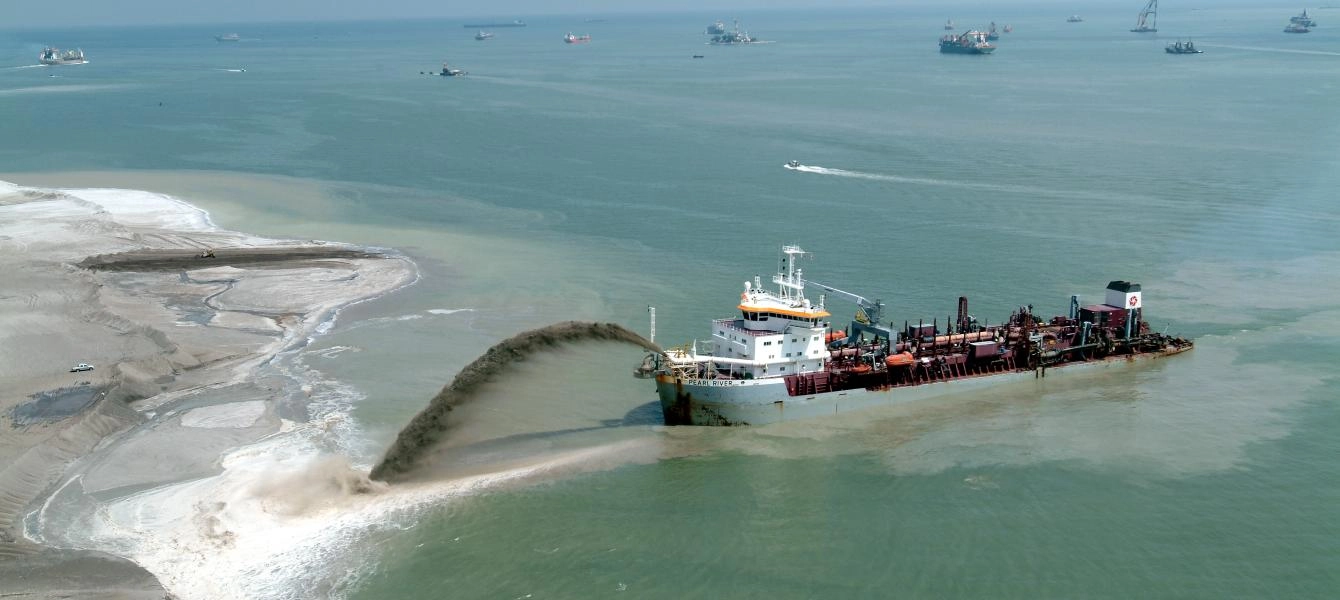Introduction
Coastal protection and navigation maintenance are vital for safeguarding shorelines and facilitating maritime trade. Specialized dredging equipment emerges as a crucial solution for addressing these challenges. In this article, we explore the pivotal role of dredging technology in coastal resilience and safe navigation.
Understanding Coastal Protection:
Coastal protection encompasses strategies to combat erosion, flooding, and environmental degradation. Specialized dredging equipment offers versatile solutions to bolster coastal defenses.
- Beach Nourishment: Beach erosion threatens coastal communities and ecosystems. Dredging equipment restores eroded beaches through sand replenishment, bolstering natural defenses against coastal erosion and enhancing beach aesthetics.
- Barrier Island Restoration: Barrier islands provide critical protection against storm surges. Dredging facilitates sand deposition on these islands, reinforcing their resilience and preserving coastal habitats for enhanced storm protection.
- Wetland Restoration: Wetlands serve as vital buffers against flooding and habitat for diverse species. Dredging aids in wetland restoration by removing sediment and invasive species, promoting ecosystem health and resilience.
- Land Reclamation: Land scarcity in coastal areas necessitates innovative solutions. Dredging enables land reclamation projects, creating space for development while balancing ecological conservation and human needs.
- Channel Maintenance: Clear channels are essential for maritime traffic and ecosystem connectivity. Dredging ensures water flow by removing sediment buildup, mitigating flood risks, and preserving navigation routes.
Navigating Safely:
Safe navigation is imperative for maritime operations and trade. Specialized dredging equipment plays a pivotal role in maintaining navigational channels and ensuring vessel safety.
- Maintaining Water Depths: Ports and harbors require adequate water depths for vessel access. Dredging equipment removes sediment buildup, ensuring navigational safety and uninterrupted maritime trade.
- Clearing Debris: Debris poses hazards to vessel navigation and marine ecosystems. Dredgers clear debris, enhancing navigational safety and protecting coastal environments from pollution.
- Sediment Management: Efficient sediment management is vital for port infrastructure maintenance. Dredging manages sediment transport, preventing sedimentation in channels and preserving port functionality.
- Infrastructure Maintenance: Coastal infrastructure, such as docks and piers, requires regular upkeep. Dredging supports infrastructure maintenance by removing sediment and prolonging the lifespan of maritime facilities.
Exploring Technological Innovations in Dredging Equipment for Enhancing Coastal Resilience
- GPS and Positioning Systems: Modern dredging equipment integrates GPS and advanced positioning systems to precisely locate dredging areas. By accurately mapping sediment distribution, dredgers can efficiently remove materials, mitigating erosion and enhancing coastal resilience.
- Sensors and Monitoring Systems: Dredging operations benefit from various sensors and monitoring systems that assess sediment composition, water quality, and environmental conditions. This data-driven approach enables operators to optimize dredging strategies while minimizing ecological impact.
- Hydraulic Modeling Software: Engineers use hydraulic modeling software to simulate sediment transport processes and coastal dynamics. By analyzing erosion patterns and sediment deposition, dredging projects can be planned to align with long-term coastal resilience goals.Dredge Pump and Cutter Technology: Innovations in pump and cutter technology improve dredging efficiency and precision. Advanced pumps and cutters can handle diverse sediment types, including compacted materials, thereby enhancing overall dredging effectiveness.
- Dredge Material Handling Systems: Onboard material handling systems streamline the collection, transport, and disposal of dredged material. These systems optimize operational workflows while adhering to environmental regulations, ensuring sustainable dredging practices.
- Remote Sensing and Surveying: Remote sensing techniques, such as LiDAR and satellite imagery, provide valuable data for coastal mapping and habitat assessment. Integration of remote sensing with dredging operations enhances project planning and environmental impact assessment, fostering informed decision-making.
- Dredge Automation and Robotics: Automation and robotics play an increasingly significant role in dredging operations, offering benefits such as increased safety, efficiency, and precision. Autonomous dredgers can operate in challenging conditions while minimizing human intervention, revolutionizing the dredging industry.
Specialized dredging equipment is indispensable for coastal resilience and maritime safety. By harnessing the power of dredging technology, we can protect coastal communities, preserve natural habitats, and ensure sustainable maritime trade. Embracing innovation and collaboration, we pave the way for a resilient and thriving coastal future.
